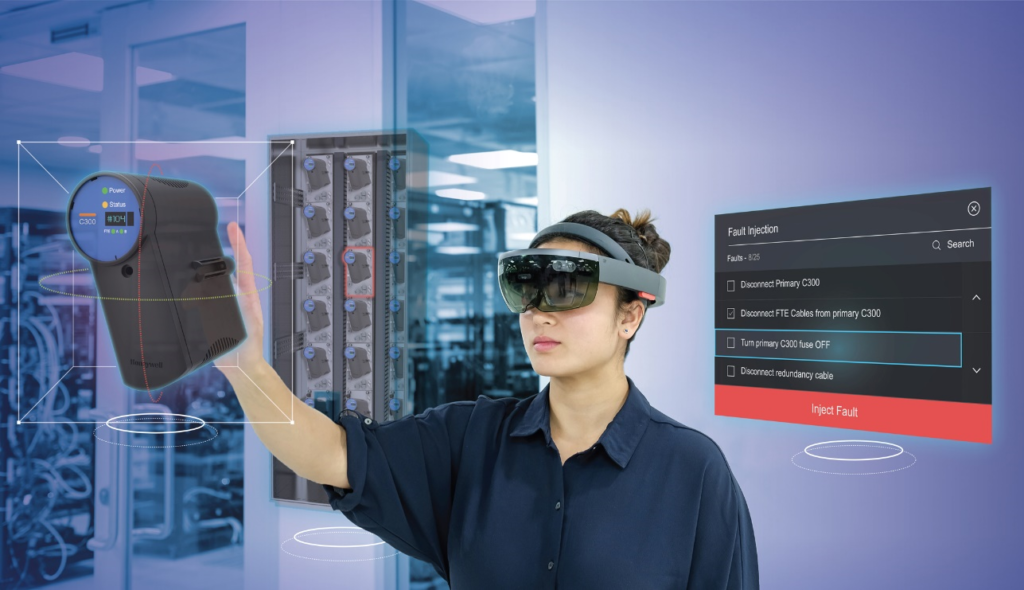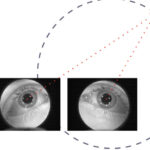Caltech
Many leading research groups like the NASA Jet Propulsion Lab at the California Institute of Technology (Caltech), which helped send the Curiosity rover to Mars, and other leading academia are supporting VR development. Many heavyweight tech companies such as Microsoft, NVIDIA, Qualcomm, and IBM are investing in VR.
Caltech is using VR to improve the science of the future. “We are thinking about what doing science will look like 10 to 15 years from now,” said Santiago Lombeyda, a computational scientist at the Center for Data-Driven Discovery (CD3), the group behind the virtual reality research, as well as other data science projects. CD3 is a joint partnership between Caltech and JPL, which is managed by Caltech for NASA. “In the future, a scientist might be working on their desktop, and then they could just grab a pair of virtual reality glasses, or they may even be already wearing regular glasses that enable VR, and then start manipulating their data in the same shared visual context of their actual work area.”
Microsoft
In VR, Microsoft is known for its HoloLens 2. Based on the Qualcomm Snapdragon 850 and a custom-built holographic processing unit, the HoloLens 2 headset checks eye movements with two IR cameras and head movement with four light cameras. For developers, the Windows 10 OS includes a holographic shell, holographic APIs, perception APIs, middleware, and Xbox Live services. This enables a familiar experience across apps and content and ease of development. Besides being used for gaming, the HoloLens 2 helps solve business problems in education, training (Figure 1), remote field support, healthcare, and manufacturing. This trend will continue.
According to a Microsoft spokesperson, “Front-line workers comprise 80 percent of the global workforce. They form the backbone of many of the world’s largest industries, but they’ve been largely underserved by technology. Without them, the ambitions of many organizations could not be brought to life. Mixed reality is poised to help them work together, problem solve and communicate in more immersive ways. They will also be able to access the information they need when they need it in a spatially relevant, heads-up, and hands-free way. For Information Workers, mixed reality will enable them to collaborate and work remotely both synchronously and asynchronously. This will allow them to change the content, the people, or even the location of a meeting, in a matter of seconds.”

NVIDIA
NVIDIA, a leader in graphics processing unit (GPU) development, has changed the VR and artificial intelligence (AI) landscape with its superfast GPU technology. They offer chipsets and modules to accelerate the development of VR.
“The demands of using high-fidelity engineering models and creating photorealistic, beautiful environments are extraordinarily compute-intensive and where NVIDIA Quadro GPUs shine,” said Greg Jones, senior manager for XR and product manager of CloudXR at NVIDIA. “As these collaborative design environments continue to develop, AI will play a larger role in features from speech translation and understanding to generative design, further increasing the compute workload and delivering astounding efficiencies in the design and manufacturing pipelines.”
What does the future hold?
VR has increased the efficiency of knowledge transfer in many different areas. On-site training can be replaced by off-site training with VR, saving travel costs and time. Additionally, VR simulation can provide remarkable savings. What used to cost thousands of dollars, such as immersive simulation rooms, can now be replaced with VR HMDs.
There are other benefits to fueling the growth of VR.
“When looking at the workplace, VR has the potential to change product development significantly. Low network latency and advanced hardware will allow anyone to work closely as a team regardless of location and time zone. VR will allow everyone to see, hold, and explore a product without requiring expensive physical prototyping. Haptic controller input and voice commands will enable changing color and shape as team members push and pull the object to iterate to the best solution rapidly. Ultimately, faster time to market with more compelling designs will be the hallmark of the new design method,” added Peter Hartwell, CTO at InvenSense, a TDK group company.
“In the future, VR will continue to provide benefits for training and simulation. Walmart has tens of thousands of workers training in VR because of its cost-effectiveness. Sales, retail, and marketing is another popular application. Car dealerships can use VR to help customers experience virtual test drives and product customization,” commented Eric Abbruzzese, AR/VR Research Director at Global Tech Market Advisory, ABI Research.
New applications for VR will continue to increase, and it will evolve into AR, MR, and, ultimately XR.


Leave a Reply